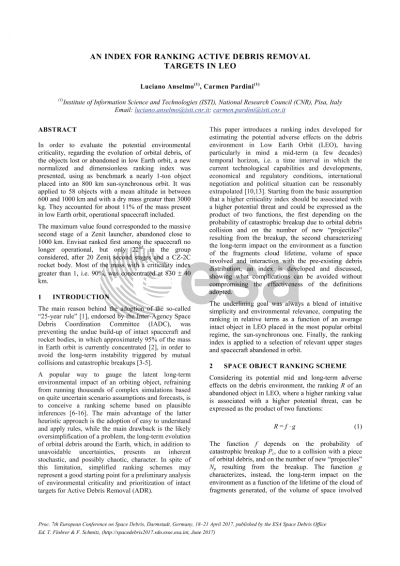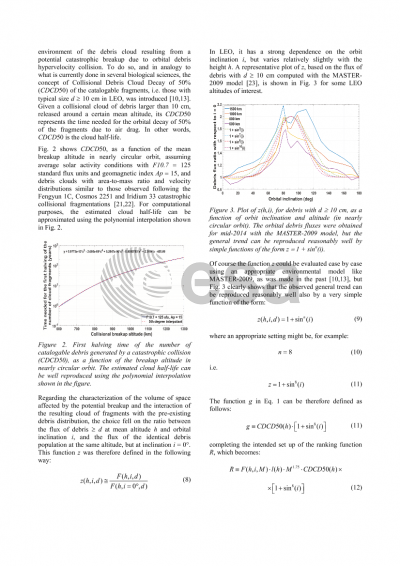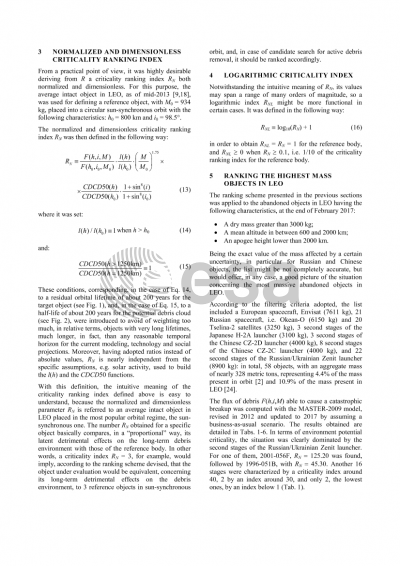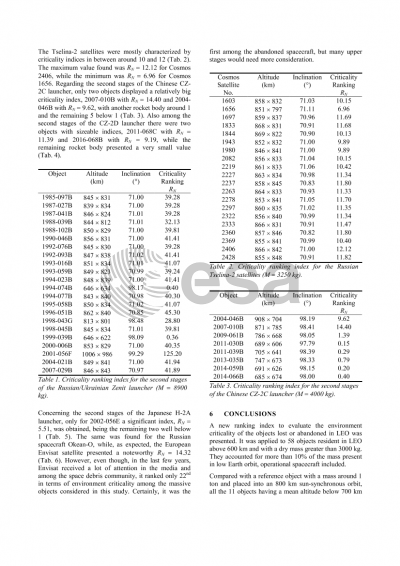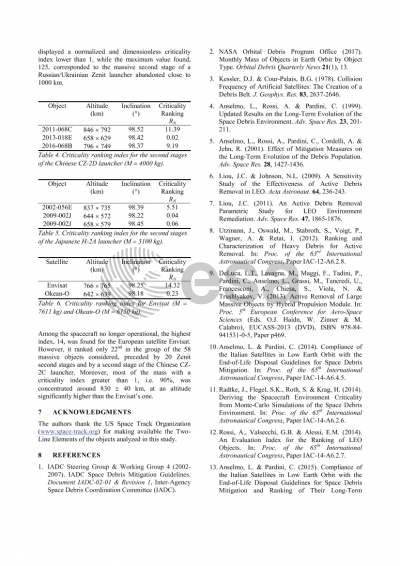Document details

Abstract
The main reason behind the adoption of the so-called “25-year rule” endorsed by the Inter-Agency Space Debris Coordination Committee (IADC) was preventing the undue build-up of intact spacecraft and rocket bodies, in which approximately 97% of the mass in low Earth orbit (LEO) is currently concentrated, in order to avoid the long-term instability triggered by mutual collisions and catastrophic breakups. A popular way to gauge the latent long-term environmental impact of an orbiting object, refraining from running thousands of complex simulations based on quite uncertain scenario assumptions and forecasts, is to conceive a ranking scheme based on plausible inferences. The main advantage of the latter heuristic approach is the adoption of easy to understand and apply rules, while the main drawback is the likely oversimplification of a problem, the long-term evolution of orbital debris around the Earth, which, in addition to unavoidable uncertainties, presents an inherent stochastic, and possibly chaotic, character. In spite of this limitation, simplified ranking schemes may represent a good starting point for a preliminary analysis of environmental criticality and prioritization of intact targets for active debris removal (ADR). This paper introduces a few ranking indexes developed for estimating the potential adverse effects on the debris environment in LEO, having particularly in mind a mid-term (a few decades) temporal horizon, i.e. a time interval in which the current technological capabilities and developments, economical and regulatory conditions, international negotiation and political situation can be reasonably extrapolated. Starting from the basic assumption that a higher criticality index should be associated with a higher potential threat and could be expressed as the product of two functions, the first depending on the probability of catastrophic breakup due to orbital debris collision and on the number of new “projectiles” resulting from the breakup, the second characterizing the long-term impact on the environment as a function of the fragments cloud lifetime, volume of space involved and interaction with the pre-existing debris distribution, a few indexes are developed and discussed, showing what complications can be avoided without compromising the effectiveness of the definitions adopted. The underlining goal was always a blend of intuitive simplicity and environmental relevance, computing the ranking in relative terms as a function of an average intact object in LEO placed in the most popular orbital regime, the sun-synchronous one. Finally, the ranking indexes are applied to a selection of relevant upper stages and spacecraft abandoned in orbit.
Preview
